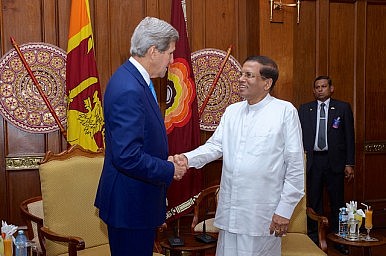Sri Lanka Moves in the Right Direction on Internet Freedom
Sri Lanka’s new government moves in the right direction on internet freedom, although concerns about surveillance technologies persist.
Freedom House has just released its latest report on internet freedom. Sixty-five countries were examined for this study. Broadly speaking, things are moving in the wrong direction, with net freedom in decline for the fifth straight year. According to the report, the biggest positive changes have occurred in Zambia and Sri Lanka.
For Sri Lanka, Freedom House has highlighted four major developments:
- The election of President Maithripala Sirisena in January 2015
- The unblocking of various websites
- During the period under review, rights violations have decreased significantly
- Digital activism and citizen engagement (over important social and political topics) have increased
On internet freedom, the country is still classified as “partly free.”
The aforementioned moves should be welcomed and stand in contradistinction to earlier times when Mahinda Rajapaksa, the previous president, pushed the country down an ever more authoritarian path. That being said, there are other angles to consider. The report notes:
In spite of the new government’s commitment to freedom of expression, transparency, and right to information, privacy advocates are still cautious about how existing surveillance technology could be utilized and intensified in the future. This is particularly relevant given that security surveillance in the north and east still continues.
Sanjana Hattotuwa, the founding editor of Groundviews – the island nation’s first citizen journalism website – and a senior researcher at the Colombo-based Centre for Policy Alternatives (CPA), a think tank, also articulates concerns surrounding the surveillance architecture that was put in place while Rajapaksa was in power. Hattotuwa notes that it’s not clear what’s happened to all of these technologies. “What is of an enduring concern is the degree to which these investments remain in the dark,” he says. Last July, Groundviews published a compelling piece about this.
The new government’s list of unfulfilled promises is long. There are many (legitimate) doubts about how much the Sirisena administration will be able to accomplish in the coming years. While acknowledging that there’s still a lot to do and that many questions remain unanswered, small steps in the right direction merit attention.
